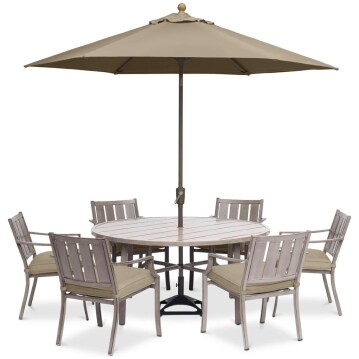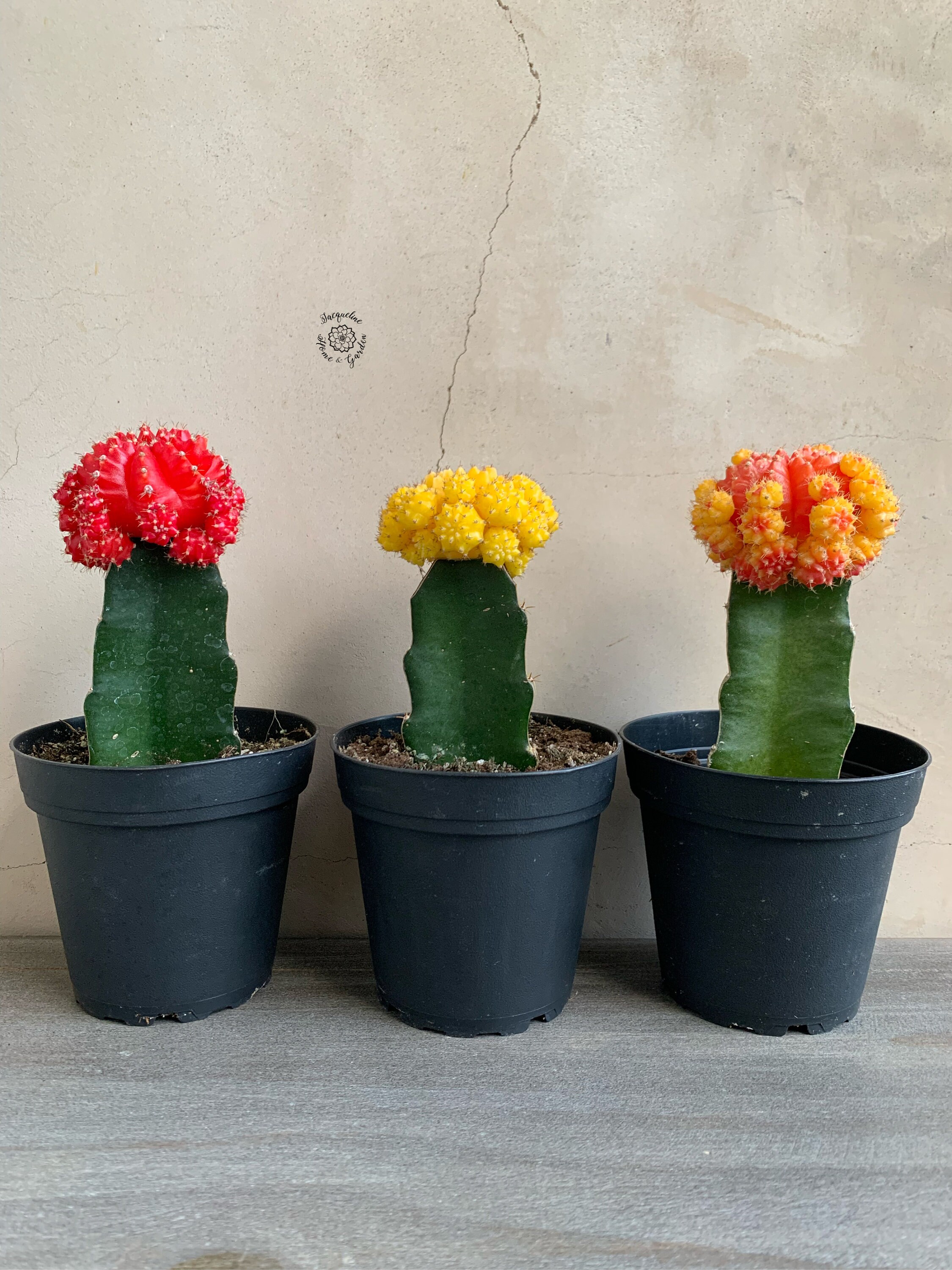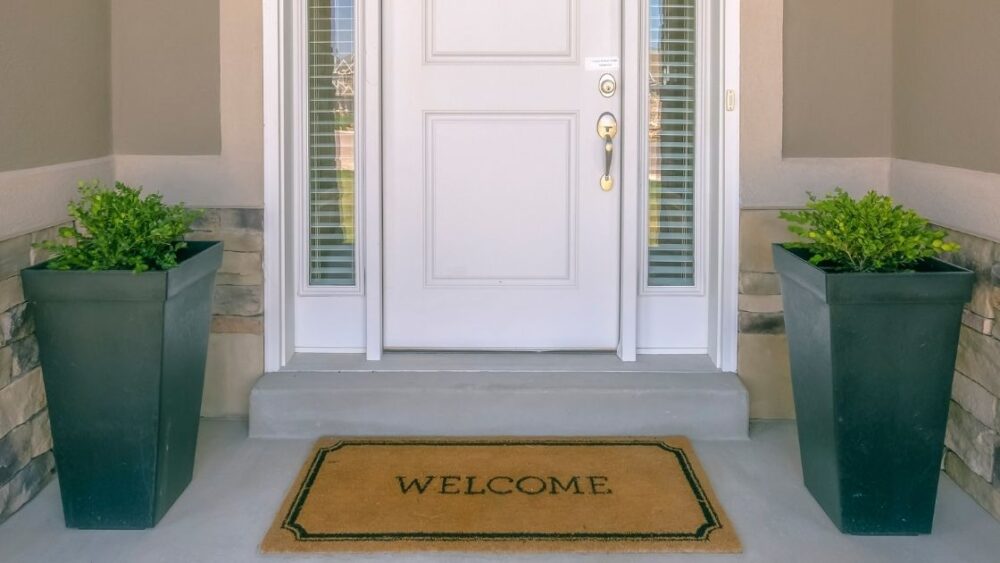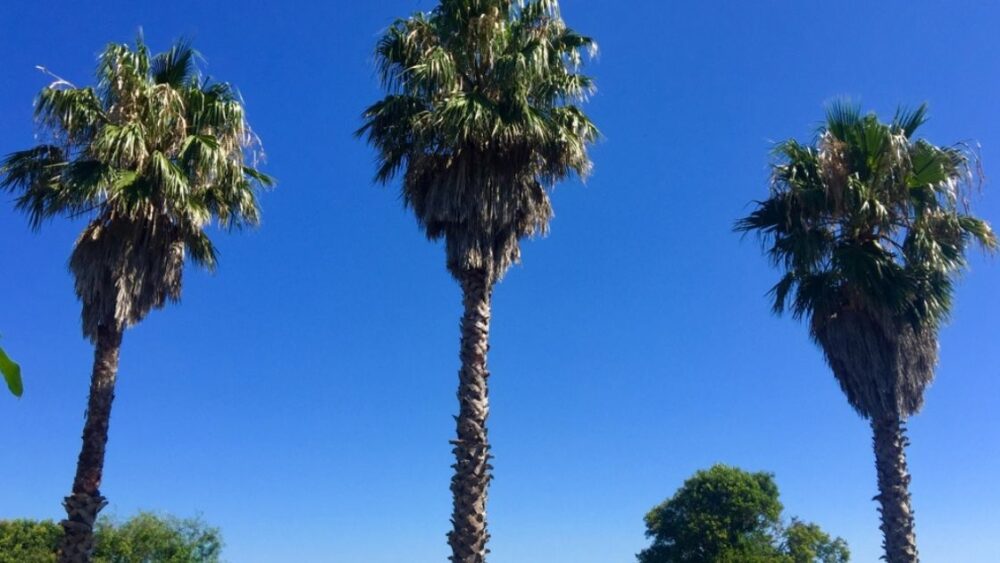
The moon cactus is different from other plants because of the lack of chlorophyll in the plant. It is easy for most plants to carry out their activities for survival from the use of chlorophyll, but the case is different with the moon cactus. The plant cannot survive on its own without chlorophyll, and this is why it seems that the moon cactus is hard to maintain. We must consider the process involved in the grafting and care of moon cactus, the care after drafting, and then summarize the fact that ‘moon cactus is easy to take care of.’
Moon Cactus Basics
Everything about the moon cactus is unique. The color is beautiful, and the structure and plant style is appealing. If you want to spend a lot of time taking care of your moon cactus, it is surely worth it. The only thing special about the moon cactus is the grafting process that requires youth. Once you resolve this, the moon cactus finds a way to resolve and manage life by itself.
For example, the plant has varieties of color aside from those that contribute to plant food processing. This is why it is hard for cactus to make the necessary biological processes of food making.
Browse our Affiliate Products
When you see a moon cactus on a green plant, the combination is a set of two different plants. Since the plant cannot produce food through photosynthesis (chlorophyll II), the plant is grafted to another plant with enough chlorophyll that both survive in nature. If you want to know if the plant is stressful to take care of, compare it to cultivating another plant (with chlorophyll). Can you manage the grafting? Do you think the process is not stressful for you? Can you manage it excellently? If yes, how long can it take you to graft a moon cactus on another plant?
For more information on other types of cacti check out our cacti category, by clicking here.
Moon cactus general information and care
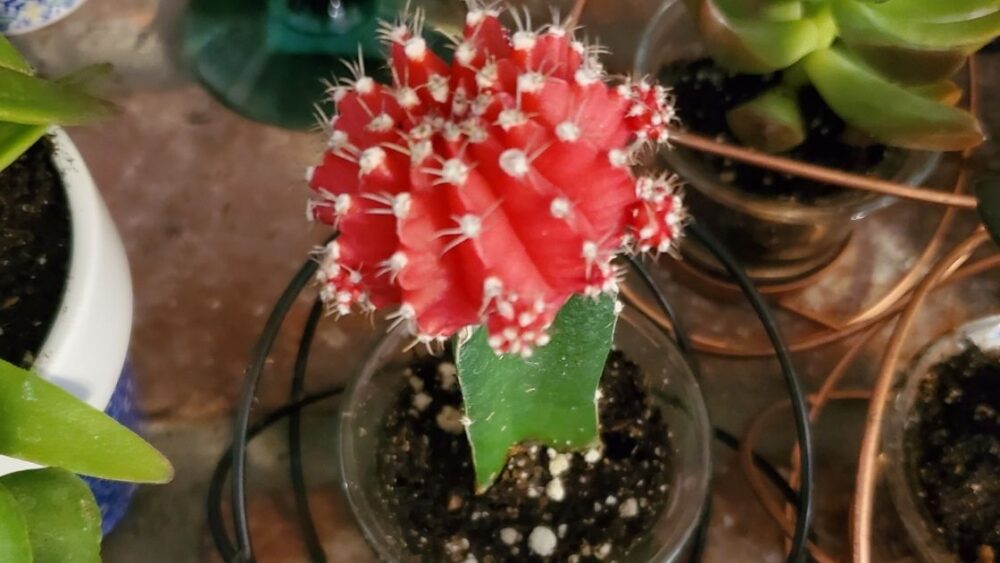
- Common name: the plant’s common name is different geographically. The Spanish name is not the same as the English name. However, it is popularly known as the moon cactus. Other names are ball cactus, balloon cactus, silver ball cactus, blue ball cactus, and rounded ball cactus.
- Scientific name: Gymnocalycium mihanovichii
- Sun: the cactus moon thrives well in full sun with shades. For example, you can place your cactus moon plant in an area with shades, even in the presence of the bright sun.
Some of the cacti include: (Echinocereus or Hedgehog Cactus, Ferocactus or Barrel Cactus, Mistletoe Cactus, Schlumbergera or Christmas Cactus)
- Watering: Make sure you put the moon cactus through a total dry watering method. The plant does not require much water. When you water it, ensure you allow the soil to dry out completely before you wet again, and you may not necessarily wet again for another week. For example, you may consider Barrel Cactus, Saguaro Cactus, Star Cactus, and Feather Cactus.
- Adult size: The moon cactus does not really grow beyond 12″. The adults are averagely observed at 6″ in height and 12″ in diameter.
- Planting zone: The standard by which you determine which plants are most likely to thrive at a location—the moon cactus zone range between 10 and 11.
- Weather hardiness: The plant thrives better when placed at average indoor temperature; it is otherwise moderate ii weather hardiness.
- Propagation: Involves stem cutting: (for example, grafting), where the stem is grafted on other plants (with chlorophyll) for better cultivation.
- Toxicity: The cactus could be poisonous to humans. Thus, proper handling is required. Prickly pear, San Pedro cactus, Echinopsis Peruviana, Peyote, Barrel cactus, Saguaro cactus, Cholla cactus, and Euphorbia canariensis are poisonous cactus plants.
- Dormancy: The plant thrives well in the wintertime. For example, the cactus go dormant in winter.
- Soil: The plant does well in dry soil. For example, you may consider porous, pebbly, or sandy soil that provides excellent drainage and plenty of aeration.
- Bloom: We have night-blooming cactus and weather booming ones. The Peruvian cactus blooms well at night. The same plant produces white flowers on its flattened stem in spring and summer. In summary, cactus blooms are best at night (for some) and in spring and summer.
- Fertilizer: The fertilizer for cactus is not ideally specific. Once you apply an idea fertilizer, they grow well. However, ensure fertilizer application is not more than once a month. If you have to choose between two fertilizers, go for low-nitrogen content – water-soluble fertilizer. Use a 5-10-10 blend or 10-10-10 fertilizer diluted to 1/4th strength.
(Browse our affiliate category of cacti fertilizers and soils by clicking here. Soils and Fertilizers / Cacti & Succulents
For more information on cactus soil and fertilizers check out this articles below:
Where does the moon cactus grow best?
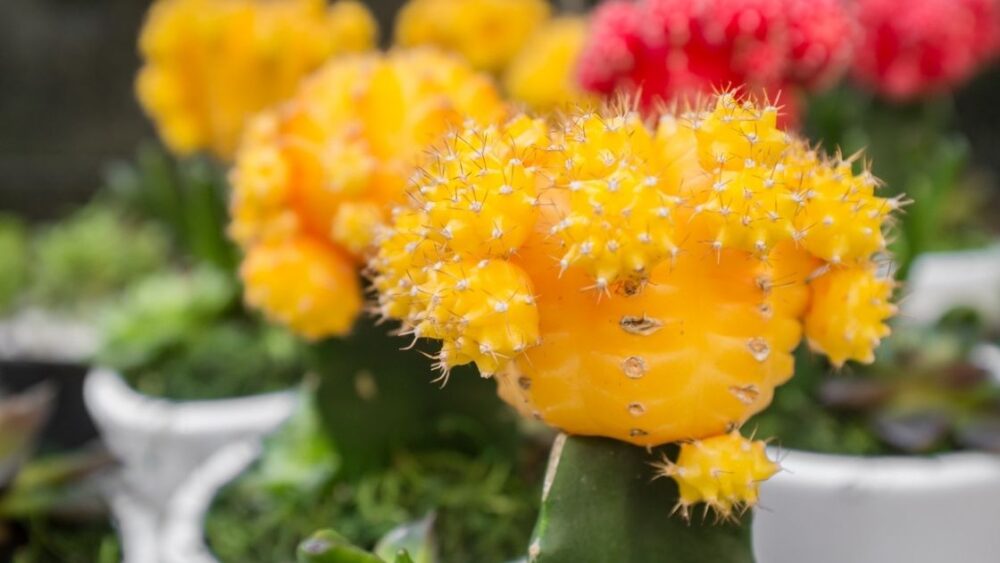
Consider the growth in the aspect of some factors listed above. In the case of sunlight, the plant thrives best in bright sunlight but a shade simultaneously. The idea is to expose the cactus to sunlight, but not in direct sunlight. Direct sunlight harms the plant; place it in a position with shade.
The plant does not need too much when considering watering. You should wet the plant only when it is dry. In case of summer and high sun exposure, you may increase the watery rate, depending on how fast the soil dries. The best season to grow moon cactus is in the spring and summer.
You may place the plant either indoors or outdoors, which depends on the level of sunlight exposure. If your room is dark, you may place the plant beside the window. However, make sure the cactus does not receive direct sunlight. If otherwise, you may consider shading the area or painting some parts to reduce the sun intensity. Also, if you consider placing your plant outside, ensure the place is shaded from direct sunlight. The position or planted area affects the cactus growth – it grows higher indirect soil than in a planter.
Moon cactus common problems?
Most of the problems come from improper care or not taking note of the properties mentioned above. Some of the common problems are listed below.
- Beige spots: this problem is caused by over-exposure to sunlight. Once the moon cactus receives more than enough light, it shows beige spots around the body.
- Root rot: the plant is prone to root rot if you overwater the plant. Always add water when the plant-soil is totally dry.
- Pets: newly grafted or cut cactus may attract pests. Ensure you have certain chemicals or other means to push pests away from the plant.
If your cactus ever had white fuzz, check out this article: Why Does My Cactus Have White Fuzz? Problems, Causes and Solutions
What to do when your cactus plant is dying?
First, you need to figure out what causes the plant to be in the state of dying.
For example, if the plant is not doing well due to sunburning and the presence of beige spots, you should take the plant away from the present location. If this results from some other issues, try to cut out the healthy white part alone and replant it in another soil. Only wet the plant when the soil dries out.
Final Thoughts
Your moon cactus is beautiful and worth the extra care from you. The caring is not too much to provide. You simply need to cultivate the path for the plant to make excellent use of chlorophyll, ensure the plant has enough water when necessary, and do not over-expose the plant to sunlight.



